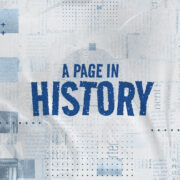Dia del Libro, Manila

For some years now, Instituto Cervantes de Manila has successfully organized Dia del Libro (Book Day) at the Ayala Triangle Gardens on a Saturday closest to April 23. Unlike in temperate zones, where April 23 falls in the spring, in the cool window between winter and summer, April in Manila is a foretaste of hell. The heat index these days is best described in Spanish as “hot as seven devils (calorisimo como siete demonios)” making the Ayala Triangle a most inhospitable venue for Dia del Libro and yet I go and sign books here for over three hours each year. I once thought aloud that we should move Dia del Libro to the first or last quarter of the year when the weather is more conducive to browsing in open-air book stalls, but then April 23 is World Book Day. It also happens to be the anniversary of the deaths of Cervantes (April 22, 1616) and Shakespeare (April 23, 1616).
April 23 in Barcelona is celebrated as the feast of St. Jordi (St. George) and the Day of Books and Roses. On this day, in Catalonia, men offer roses to women, and women offer books to men. In the Manila iteration, women receive roses while men receive—while stocks and sizes last—an Instituto Cervantes t-shirt inscribed with a quote from Spanish poetry. The origin of this festival goes back to the legend of St. Jordi who has been the official patron saint of Catalonia since 1456. I never believed the almost fairy-tale-like story of St. George, who killed the dragon and rescued the princess in distress—until my doubt was confronted by a relic in the treasury of the Benedictine Abbey of St. Augustine’s in Ramsgate, England. My eyebrows rose when I was shown a piece of cloth allegedly from the banner St. George carried when he killed the dragon. If you think that’s mind-boggling, the other relics shown to me were: a piece of cloth from St. Joseph’s underpants, a piece of wood from the manger in Bethlehem where the child Jesus lay, and a piece of glass stained with “milk of the Virgin Mary”!
Part of the legend of St. Jordi in Catalonia is that rose bushes grew from the felled dragon’s blood. Roses were presented to women to commemorate this legend. In October 1926, a Day of the Book was set for Oct. 7, the birthday of Cervantes. It was celebrated successfully, and by 1931, was moved from Oct. 7 to April 23 to commemorate the deaths of Cervantes and Shakespeare. By 1995, the United Nations Educational, Scientific, and Cultural Organization or Unesco adopted April 23 as World Book Day/International Day of the Book/Copyright Day. The celebration has gone beyond mere books and roses to serious discussions on promoting books as bridges between times and cultures. World Book Day encourages reading, underscores the need for universal literacy, and the promotion of literature, cultural industries, intellectual property rights and copyright.
Since the pandemic, I have found it more convenient to buy books online than in brick-and-mortar bookstores. Buying online saves you the trouble of driving through traffic, looking for parking, and searching for books among the school supplies. Sometimes books are not shelved in their proper category or classification.
In my line of work, I often require reference books that are out of print and only available from used or specialty bookstores. After the pandemic, I started culling my collection to make more shelf space for new books, or existing ones lying in piles on the floor. Books have a way of growing very quickly, like weeds, in my study. When I contemplated selling my rare books, a friend asked, “What would you do with the proceeds of the sale?” I replied that I would not buy more books, but will be more selective. In my calculations, this meant disposing of a roomful of books and replacing them with two or three rare and very expensive ones.
In the beginning, I thought I would hunt for samples of early Philippine printing or books published in Manila by Tomas Pinpin or Nicolas de la Cruz Bagay. Some of these books have recently made their way to auction houses and while expensive, were within budget. Then I dreamed of owning one or more of the earliest books published in the Philippines between 1593 and 1640 that are known as “incunabula.”
Then, just last week, I set my sights on the first book on the Philippines ever published, “De Moluccis Insulis” by Maximilianus Transylvanus. It was first published in 1524. A copy is considered the second oldest book in the Filipiniana section of the National Library of the Philippines. Do not judge the book by its cover because it is not about the Moluccas or Spice Islands, but it contains accounts of the survivors of the Magellan expedition. I have come across copies of this very small book in the Clements Library at the University of Michigan at Ann Arbor, and just recently in the Royal Library of Belgium in Brussels.
I was overjoyed that a friend found a copy online last weekend, but my heart sank at the price—$92,000! I guess I will have to content myself with Dia del Libro, Booksale, and the Philippine Bookfair for new acquisitions. No more rare books for me.
—————-
Comments are welcome at aocampo@ateneo.edu
Ambeth is a Public Historian whose research covers 19th century Philippines: its art, culture, and the people who figure in the birth of the nation. Professor and former Chair, Department of History, Ateneo de Manila University, he writes a widely-read editorial page column for the Philippine Daily Inquirer, and has published over 30 books—the most recent being: Martial Law: Looking Back 15 (Anvil, 2021) and Yaman: History and Heritage in Philippine Money (Bangko Sentral ng Pilipinas, 2021).


















The freedom to fly solo